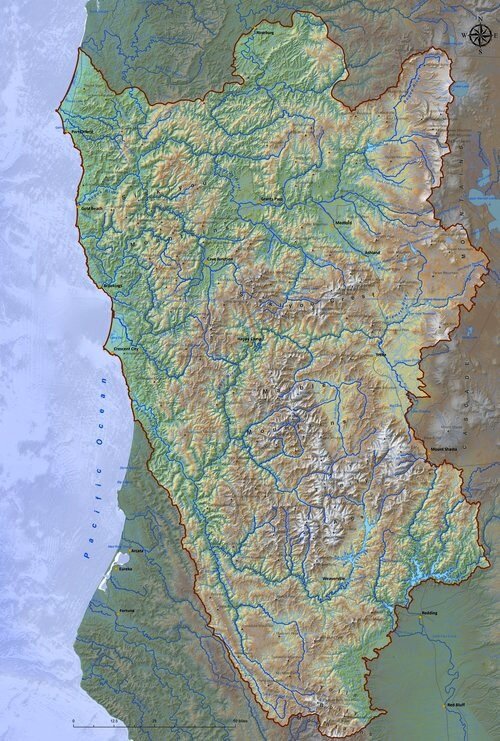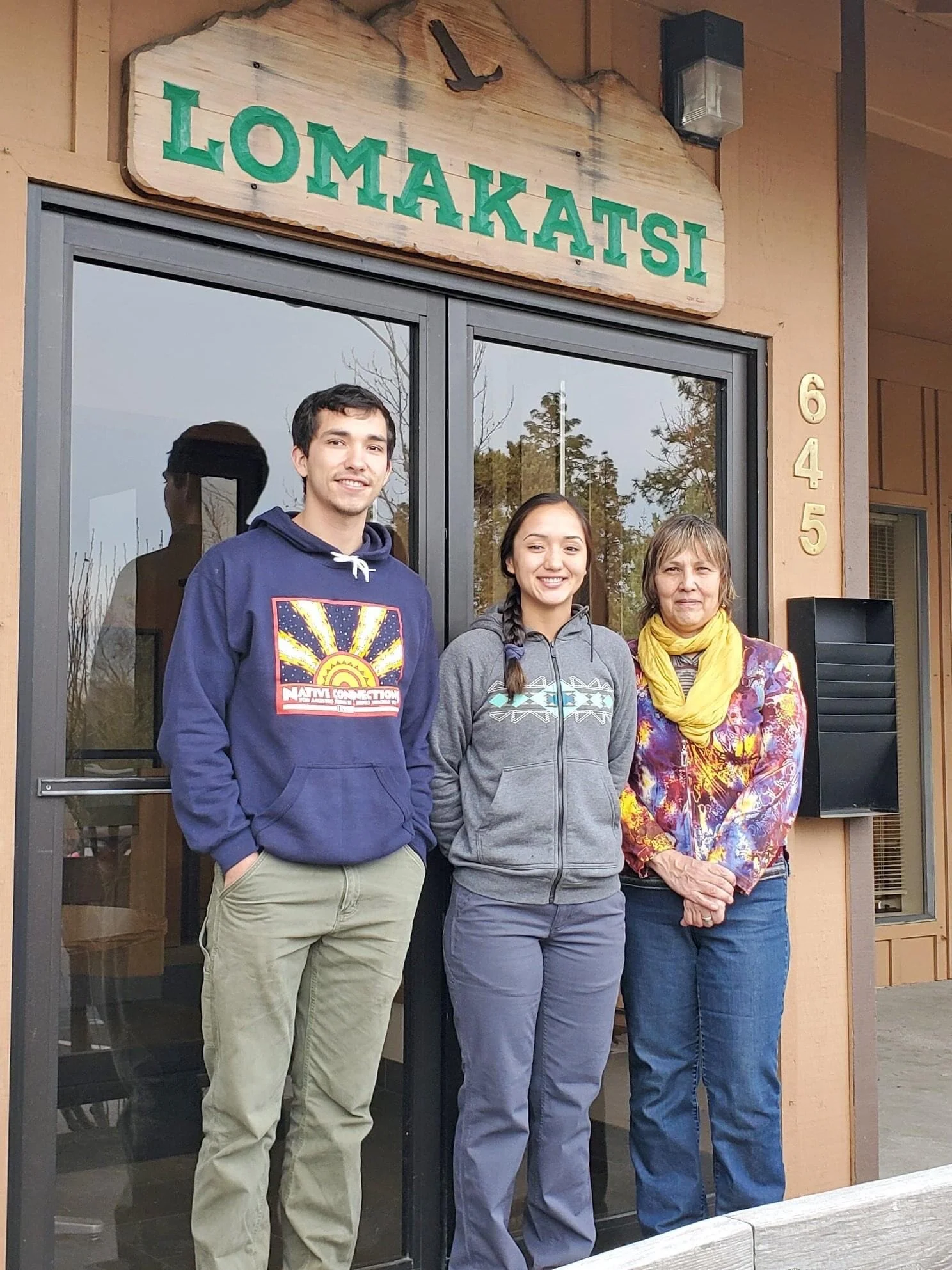Indigenous Communities in the Klamath-Siskiyou Region
We acknowledge we work on the ancestral lands of the Native tribes that lived and still live in what we call the Klamath-Siskiyou region including the Cow Creek Umpqua, Confederated Tribes of Grand Ronde, Confederated Tribes of the Siletz Indians, Takelma, Tolowea Dee-ni’, Tututni, Cayuse, Umatilla, and Walla Walla, Klamath, Chit-dee-ni’ (Chetco), Modoc, Shasta, Karuk, Yurok, Hoopa Valley Reservation, Konomihu, New River Shasta, and potentially others.
Though KS Wild works to protect and advocate for public lands, these lands were not always "public." Before being taken into federal ownership, Indigenous nations within the Klamath-Siskiyou ecoregion endured genocide, forced removal, and broken treaties with the U.S. government during colonization by white settlers.
KS Wild recognizes first, the original caretakers of this land. Additionally, KS Wild recognizes, supports, and networks with the many current Indigenous caretakers to the land, whether as individuals or through Indigenous-led organizations; the Indigenous ways-of-knowing continue to tend the land we all reside on.
Take a moment now to learn whose land you are on. Click here.
Colonization in the Rogue Valley
Take some time to reflect on the history of the land that we have the privilege to protect and defend. Independent nations existed sustainably in the Rogue Valley for tens of thousands of years before white settlers began arriving in southern Oregon in 1850. At that time, the federal government enacted the U.S. Donation Land Act, giving 160-300 acre parcels of Indigenous land ‘free’ to any white settler willing to live on it. The settlers came, and were by all accounts extremely brutal to the people already living on this ‘free’ land. The discovery of gold, the pursuit of mining, and the exploitation of natural resources in the Rogue Valley, fueled the genocide of the Takelma people. By 1856, the tribal members who had survived the many violent attacks, were forcibly removed and marched to the Grand Ronde and Siletz Reservations 300 miles away. Many died along the journey or in captivity at the reservation due to harsh conditions, disease, and inadequate nutrition. For those who survived, continued attempts to erase their Indigenous culture persisted through the destruction of their language and cultural practices.
The people, the cultures, and the Indigenous leaders who have lived sustainably in the Klamath Siskiyou region for thousands of years are not just part of the history of this land; they are the present, and the future. The genocide that took place to create what is now the United States of America did not succeed in erasing the cultures and the peoples of the First Nations. The Indigenous knowledge, the leaders, the stories, and the communities are alive, and rising on the North American continent. It is imperative that environmental conservation movements acknowledge the Indigenous leaders and Native voices relentlessly fighting for land protection.
KS Wild is committed to continually work in collaboration with regional Tribes, and stand together with them in defense of the land we all love and protect. Start learning about Tribes of the KS region by following the links below.
Decolonization is not a Metaphor article by Eve Tuck and K. Wayne Yang
Support Local Indigenous Projects
These Indigenous-led organizations and programs have similar missions to protect and restore healthy ecosystems around the kS region
Save California Salmon is dedicated to policy change and community advocacy for Northern California’s salmon and fish dependent people. Their goal is to support fisheries and water protection work of the local communities and to advocate for effective policy change for clean water, fisheries and communities. Learn more and donate at their website.
Cultural Fire Management Council facilitates the practice of cultural burning on the Yurok Reservation and Ancestral lands, which will lead to a healthier ecosystem for all plants and animals, long term fire protection for residents, and provide a platform that will in turn support the traditional hunting and gathering activities of Yurok. Learn more about CFMC at their website.
Lomakatsi Restoration Project has worked in partnership with Native American Tribes and tribal communities throughout Oregon and Northern California to build sustainable ecosystem restoration programs. Lomakatsi’s tribal staff works closely with tribal and agency partners to incorporate Traditional Ecological Knowledge into ecosystem restoration projects. Learn more and support them at their website.
Native American Student Union (NASU) of SOU assists American Indian, Alaskan Natives, and Indigenous Peoples in maintaining cultural values while pursuing their educational goals. NASU emphasizes the support of, the safety of, and the educational success of the Native American community. The NASU organization seeks to treat all people fairly and equally within the organization as well as within the community. Learn more at their website.
Karuk Indigenous Women’s-in-Fire Training Exchange (KWTREX) focuses on Indigenous women and prescribed burning with cultural objectives in the Klamath Mountains. KWRTREX believes that those who are typically under-represented in fire — Indigenous people, women, and others — have unique talents and perspectives and play a critical role in revitalizing fire cultures and building a more equitable, just, and beneficial fire management system. See their schedule and objectives at their website here.
Ambo Fund will send your direct donations to support Klamath Tribal water rights and endangered fish. Make your donation here.
Nature Rights Council / Ancestral Guard is a youth-led Yurok Council for Food Sovereignty and Traditional Ecological Knowledge. Learn more here.
Paddle Tribal Waters is a program to get Tribal youth on the water with appropriate supplied kayak. Learn more and donate here.
Indigenous Gardens Network, a program through the Native Studies Department at SOU and in collaboration with Vesper Meadow, is dedicated to providing resources and access to land and First Foods for Grand Ronde and Siletz Tribal communities. Learn more here.
Ridges to Riffles partners directly with Indigenous governments and communities on on-the-ground legal and policy initiatives to restore and preserve ecosystems, including but not limited to fisheries habitat, forest health, landscape management, water quality, and water quantity. Visit their website here.
This is by no means a complete list, and is being updated regularly. Send your suggestion to info@kswild.org.
Learn More About Traditional Ecological Knowledge
Traditional Ecological Knowledge refers to the thousands of years of experience, observation, knowledge, and relationship between Indigenous cultures and the ecosystems they are a part of.
For an extensive, curated list of more articles about Traditional Ecological Knowledge, click here
The Klamath-Siskiyou Bioregion
Traditional Ecological Knowledge in the Klamath-SiSkiyou:
Learn More about Local Indigenous Culture and Activities
In 2020, Humboldt State University Native Studies Program, along with Save California Salmon, created and online, now archived, speaker series that highlighted a wide range of topics relating to clean water advocacy and Indigenous cultural revitalization.
Click here for a complete list of videos in the Advocacy & Water Protection in Native California series
To find videos about HSU Native American Studies Food Sovereignty Lab and Cultural Workshop Space, click here
Listen to Indigenous leaders and activists and take action for water justice in Northern California. Learn more at www.californiasalmon.org/mobilize-for-water-justice-1
Click here to explore the story map of Tribal Treaty Areas, created by the Confederated Tribes of the Grand Ronde.
Books for Your Reading List or Book Club
Dispossessing the Wilderness: Indian Removal and the making of the National Parks by Mark David Spence
As Long as Grass Grows: The Indigenous Fight for Environmental Justice from Colonization to Standing Rock by Dina Gilio-Whitaker
Salmon & Acorns Feed Our People: Colonialism, Nature, and Social Action by Kari Marie Norgaard
Wastelanding: Legacies of Uranium Mining in Navajo Country by Traci Brynne Voyles
Braiding Sweetgrass by Robin Wall Kimmerer




